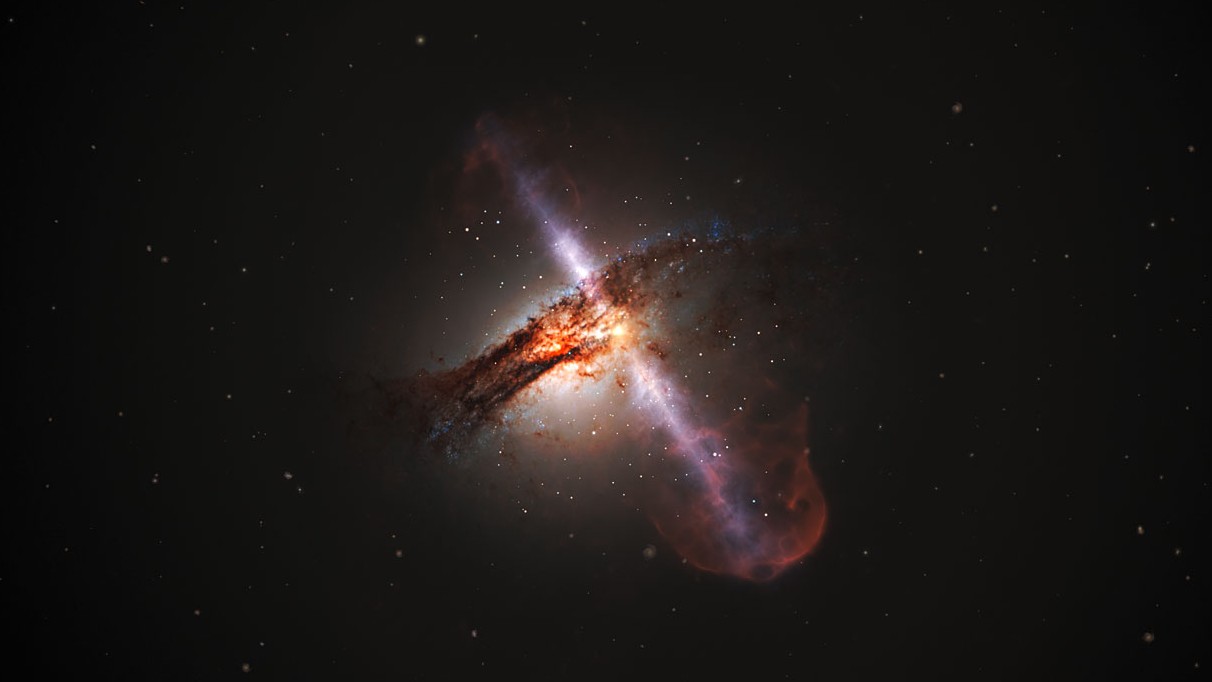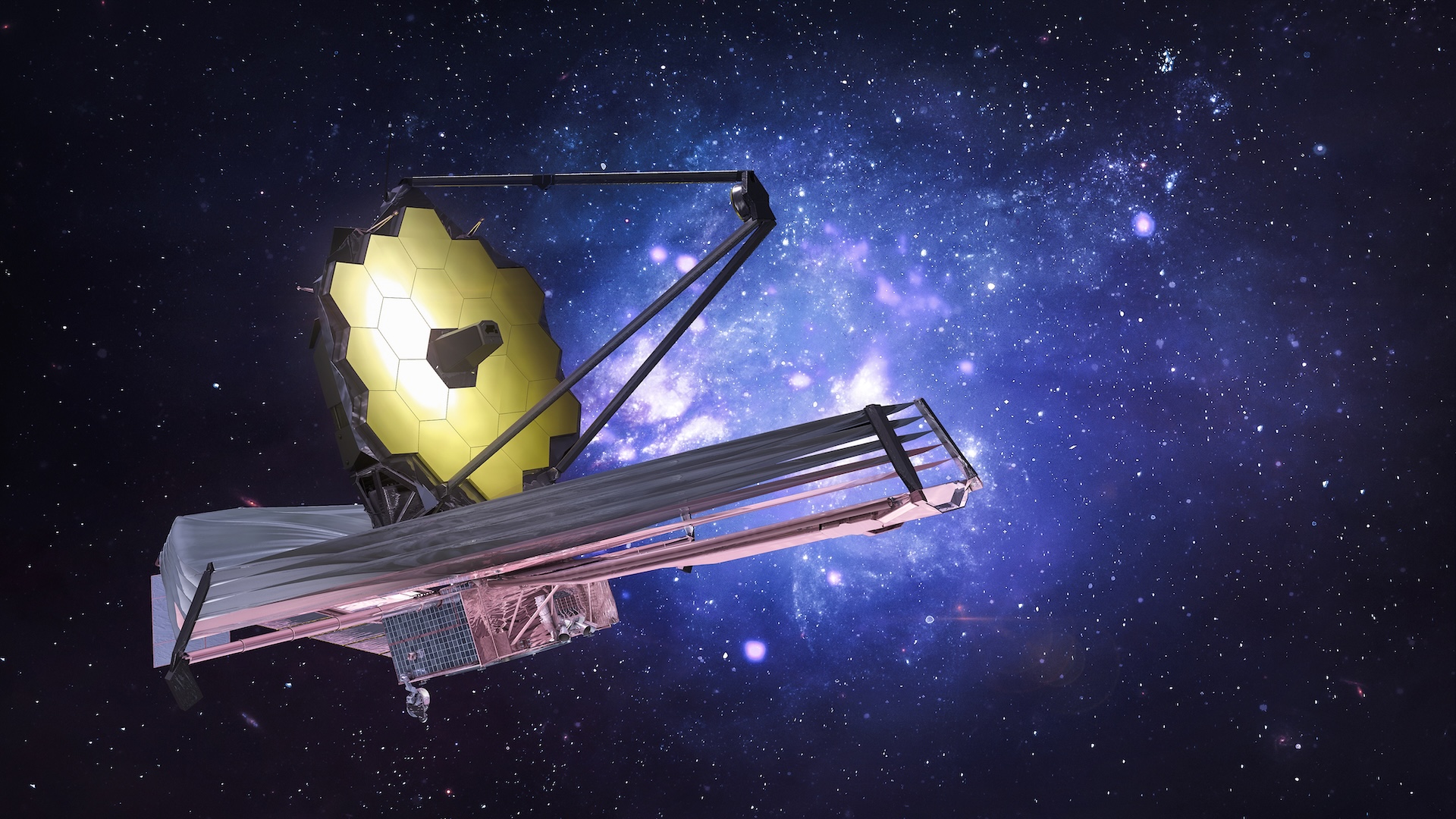Energy jet traveling 7 times the speed of light appears to break the laws of physics
A jet of particles released by two colliding stars appears to be moving seven times faster than the speed of light — but astronomers blame a cosmic illusion known as superluminal motion.

Astronomers have detected a gargantuan blast of energy from space that appears to be doing the impossible: Traveling seven times faster than the speed of light.
This is, of course, an optical illusion — a rare and mind-boggling phenomenon called superluminal motion, which occurs when particles come very close to moving at the speed of light. In this case, scientists detected a jet of energy blasting out of a stellar collision site at a staggering 99.97% of the speed of light — about 670 million mph (1.07 billion km/h), according to a study published Oct. 12 in the journal Nature.
The jet in question is the result of a cosmic cataclysm that first made waves in the scientific community in 2017. That year, scientists detected a violent collision between two neutron stars — ultra-dense, collapsed star cores that pack a sun's-worth of mass into a ball no wider than a city — located roughly 140 million light-years from Earth. The collision was so powerful it created ripples in the fabric of space-time; such disturbances are known as gravitational waves.
Albert Einstein predicted the existence of these space-time ripples in 1916, and it took scientists 100 years to find the evidence to prove it, following a collision between two black holes that was detected in 2016. The gravitational waves released by the colliding neutron stars in 2017 — a signal named GW17081 — were the first to be detected from a source other than black holes, proving that more than one type of cosmic catastrophe is capable of creating them.
Gravitational waves are invisible to the naked eye, but can be detected with instruments such as the Large Interferometer Gravitational Wave Observatory (LIGO) in Pasadena, California. So, after LIGO detected the first blast of waves from the colliding stars in 2017, astronomers around the world trained their telescopes on the merger to learn whatever they could about it. Before long, astronomers saw visible evidence of a high-speed jet of particles, blazing out of the collision site and lighting up globs of matter that had been ejected by the stars.
In their new paper, astronomers analyzed that jet with NASA's Hubble Space Telescope, the European Space Agency's Gaia space observatory and several additional radio telescopes on Earth. With these observations, the team calculated both the actual speed of the jet, and the perceived physics-defying speed.
The beyond-light-speed illusion arises from the difference in speed between the particles in the jet, and the light particles (or photons) that they emit. Because the jet's particles move nearly as fast as the light they emit, it can appear as though particles in the early part of the jet are arriving at Earth at nearly the same time as photons in the later stages of the jet — making it appear as though the jet is actually moving faster than the speed of light.
Get the world’s most fascinating discoveries delivered straight to your inbox.
Astronomers have observed this illusion at play in several other cosmic objects before, including in a near-light-speed jet blasting out of the Messier 87 galaxy in the Virgo constellation. So far, all instances of superluminal motion can be explained with math in a way that doesn't shatter the known laws of physics.

Brandon is the space / physics editor at Live Science. With more than 20 years of editorial experience, his writing has appeared in The Washington Post, Reader's Digest, CBS.com, the Richard Dawkins Foundation website and other outlets. He holds a bachelor's degree in creative writing from the University of Arizona, with minors in journalism and media arts. His interests include black holes, asteroids and comets, and the search for extraterrestrial life.


